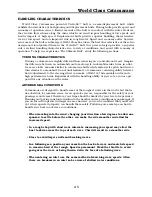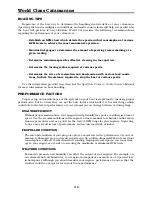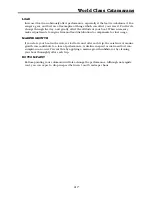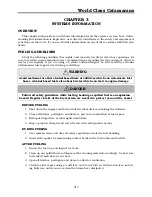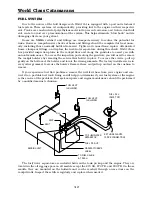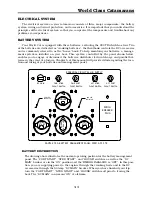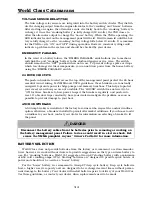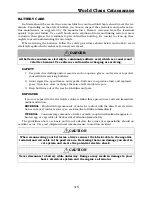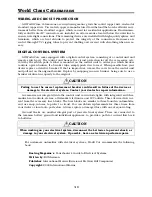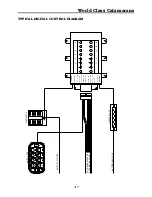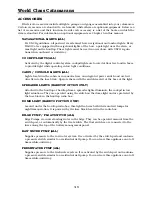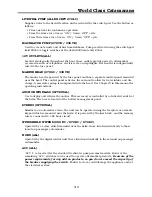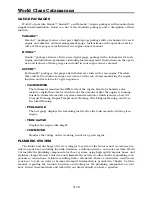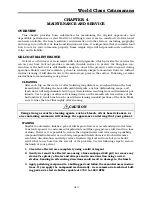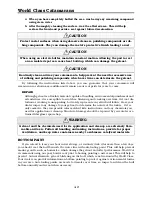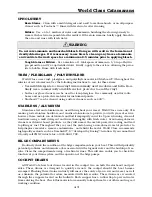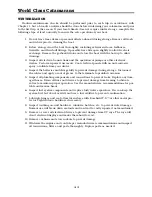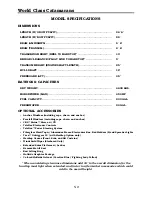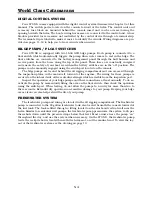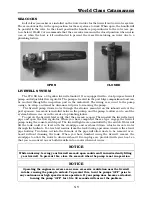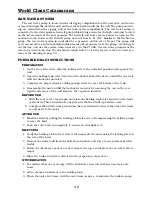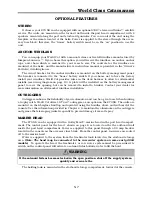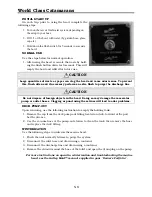
World Class Catamarans
4-2
4. When you have completely buffed the area, wash away any remaining compound
using clean water.
5. After thoroughly cleaning the surface, wax the affected area. This will help
restore the finish and provide a seal against future discoloration.
By following the instructions listed above you can guarantee that your catamaran will
remain in near showroom condition and remain a source of pride for years to come.
REPAIR
Although gelcoat is a flexible material capable of handling environmental punishment and
extended use, it is susceptible to scratches, blistering and cracking over time. Gel coat dis-
tortion or cracking is unappealing, but rarely represents any structural failure. Have your
dealer inspect any damage to your gelcoat to determine the nature of the failure . If it is
only cosmetic, they can provide color matched kits, instructions, and any chemicals you
need for application or cleanup. Structural damage should be repaired by your dealer or a
trained fiberglass repair shop.
BOTTOM PAINT
If you intend to leave your boat in wet storage, or routinely dock it for more than a few days,
you should coat the hull beneath the water line with anti-fouling paint. This will help prevent
marine growth, such as barnacles, which damage the gelcoat and affect performance. World Cat
recommends using an epoxy barrier coat prior to boating painting a new vessel. This will help to
prevent, but not eliminate, gelcoat blistering on the hull, which is not warranted by World Class.
Your dealer can provide information on bottom painting to protect against environmental toxins
in your area. Anti-fouling paints are made to dissolve over time, so inspect and clean the hull
bottom annually and recoat when necessary.
! CAUTION
Protect metal surfaces when using abrasive cleaners, polishing compounds or rub-
bing compounds. They can damage the metal’s protective finish leading to rust.
! CAUTION
When using an electric buffer, maintain constant motion. Allowing the pad to rest
on an isolated spot can cause heat buildup, which can damage the gelcoat.
! CAUTION
Routinely clean and wax your catamaran to help prevent the need for excessive use
of rubbing and polishing compounds, which over time can deteriorate the gelcoat.
! WARNING
Gelcoat and the chemicals used for its application and cleanup are extremely flam-
mable and toxic. Follow all handling and mixing instructions, provide for proper
ventilation, and keep water containers nearby to submerse catalyzed materials.

